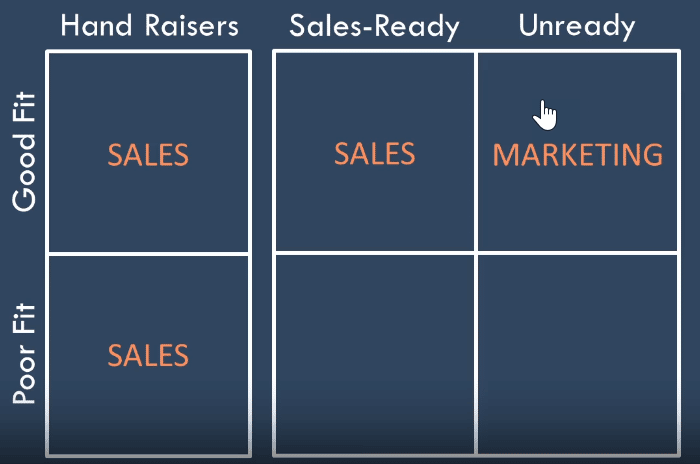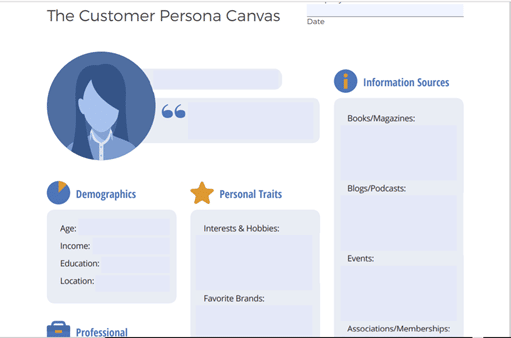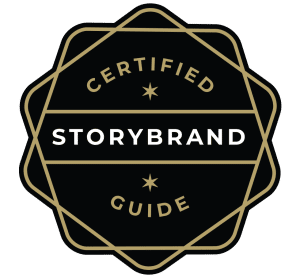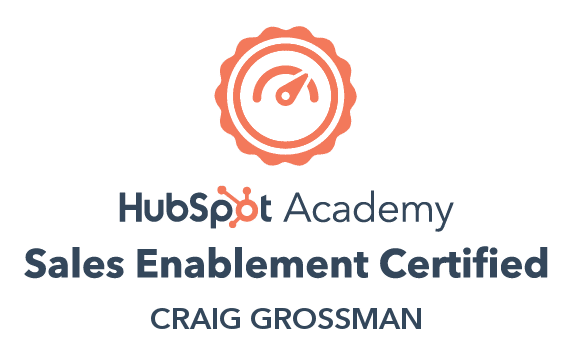
What is Sales Enablement all about? Here’s a good definition:

A part of Sales Enablement (SE) content is known as Sales Enablement Copywriting. This consists of content and copy written specifically to help sales departments save time and easily close sales. These writing projects include cold prospecting email templates, follow-up email templates, battle cards, sales deck copy, call scripts, and more. You can read more about SE Copywriting and how it can energize your sales department here.
This article contains all the basic information you need to know about initiating effective Sales Enablement Management and Processes.
Traditionally, sales and marketing departments in organizations don’t necessarily align with each other very well. For example, marketing people love rules, tend to think long-term, and want things to work as planned. On the other hand, salespeople think more short-term, are opportunistic, and don’t like rules because every selling situation is different. No wonder these departments don’t always get along!
According to Hubspot, 70% of buyers’ research is done before talking to a salesperson. And 59% prefer not to talk to sales at all!
So, a sales enablement strategy is all about bringing marketing and sales into alignment to keep up with today’s empowered buyers. Why is this important? Because if a potential client gets mixed messages from marketing and sales, they may become flustered and confused and find another company to buy from.
Developing a Sales Enablement Strategy
Management needs to take three broad steps to develop an SE strategy:
1. Create a clear goal – the metric here should be about sales results or revenue. Marketing and Sales have to be aligned around a single revenue goal.
2. Determine your target buyers – maximize your time with the people most likely to buy from you. This involves using ways to find more qualified buyers.
3. Put a content strategy in place – Salespeople often already produce content; they just don’t call it that! So focusing on creating the SE content that your salespeople need to move buyers through the sales process will reap big rewards.
Sounds easy, right? Probably not! To help your organization achieve Sales Enablement Nirvana, simply follow the nine steps listed below:
1. Use Company Visions and Revenue Goals To Motivate And Bring The Troops Together
There’s a difference between creating a vision and a revenue goal for a business. It’s best to come up with a shared vision first.
A vision is a state of affairs you want to bring into being. Two examples might be: “to become the largest _____ in my region”. Or “to move into a larger, upscale office space in 12 months”. So, find a vision that will motivate your sales and marketing teams the most.
From this shared vision, it’s possible to compute what it will cost in additional revenue to produce the stated goal. For example, if your vision/goal is to create 12 additional full-time employees by the end of this year, you might need to increase total sales by $1.2 Million to support these new employees. So this figure would become your unified revenue goal that your whole team can get behind!

2. Develop A Lead Qualification Framework
Lead qualification means deciding “What makes someone a good fit for our offerings?” This includes answering, “What actions demonstrate that a lead is sales-ready?” Both Sales and Marketing need to work together on this task.
A large part of lead qualification is creating your Ideal Customer Profile. This profile answers the question: “What are the key traits a person or organization has to have to be a good fit for our products?”
A Marketing Qualified Lead, or MQL, is a sales lead that is both a good fit for your offering and ready to have a sales conversation. Another category of sales leads to consider is called Hand Raisers. These leads have asked to speak to a salesperson (which means they are a significant lead!). To understand this MQL framework better, please look over the 6-cell matrix below:

This matrix shows that you can divide sales leads into six categories, depending on if they are a good fit or a poor fit, and whether they are hand-raisers, sales-ready, or not ready for sales yet. The orange labels in the middle of each square show where the leads should be sent to in each case – to Sales, or Marketing for further nurturing. If specific leads are a poor fit for your products (unless they are a hand-raiser), they need to be decided about on a case-by-case basis – hence the blank squares in the matrix for these leads. Faulty lead generation by marketing may cause poor-fit leads to appear.
3. Holding Your Teams Accountable With A Service Level Agreement (SLA)
A Service Level Agreement is defined as an agreement between a service provider and its customer that guarantees a specific output.
To improve Sales Enablement, an SLA is created between Sales and Marketing teams to hold each team accountable. For Marketing, this means promising they will send a certain number of leads to Sales per month. And Sales promises to contact these leads in a certain period of time.
Here’s a sample SLA: Marketing will deliver 1000 leads to sales every month, and sales will contact each potential customer within 24 hours.
SLAs help keep Sales and Marketing working towards the same goal – increasing revenue – and keep them from being competitive with each other.
There are ways to optimize SLAs, so they run smoothly. Also, four areas of concern can crop up that need to be handled, so the whole process doesn’t fall apart! Please get in touch with me if you want to learn more about making Service Level Agreements work for your organization.
4. The Importance of Holding “Smarketing” Meetings
Smarketing (Sales + Marketing) meetings are when these two departments discuss problems and collaborate on solutions. Here are the most important aspects:
1. Focus on solving problems – every issue is fair game!
- Discuss where things are beginning to break down
- Identify problem areas
- Brainstorm solutions
- Delegate assignments to the right people
2. Find a meeting cadence that works well. Start with scheduling these meetings every two weeks to one per month. And have special Smarketing conferences at least once per quarter to recognize progress.
3. Be choosy about who you invite to each meeting. Disinvite the top executives – they could be seen as intimidating. It’s better to have the rank and file from the two departments attend and rotate these with each meeting. Keep the total attendance to 10 people or less (6 or less for small businesses). Include only those who can solve problems.
4. Smarketing meetings need to be a safe place to share, where all ideas are welcome. They are a great place for experimentation!
5. Find Out Who To Target with Buyer Personas
If your goal is to sell more efficiently at a higher volume, your team needs to map out more details about your ideal customer – including their goals and challenges, and how to reach out to them.
Do this by creating Buyer Personas. These are semi-fictional representations of your ideal customers, based on data.

A buyer persona is different than an Ideal Customer Profile. The latter is a more general description or category of people with company-level attributes.
For example, in the B2C world, an Ideal Customer Profile might be homeowners. And two Buyer Personas would be 1st time home buyers and home downsizers. So the personas are a more specific type of homeowner.
For B2B, Buyer Personas could revolve around different positions in your target companies, such as one each for Sales Managers, HR Managers, or VPs of Marketing.
To create Buyer Personas, you can get information for them from many sources, some of which include:
- Sales histories
- Job postings for each persona
- Interviewing people that match the demographics or personas you’re targeting, including customers
- Online research
- Talking to sales reps about real customer issues, or going on sales calls with the reps
So, what information are you seeking to complete your Buyer Personas? There are a lot of possibilities, but here are four main topics:
1. Goals & challenges – including how your offerings can help them overcome their challenges
2. Watering holes – where do they learn more? Conferences? Publications? Podcasts? Blog posts?
3. Shopping preferences –do they prefer to shop with or without a sales rep?
4. Identities – for B2B, this includes company title (e.g., HR Director), demographics (e.g., female, age 30-45), and specific identifiers (e.g., probably has an assistant who screens calls)
Buyer Personas are all about getting to know your customers and their needs. And how your products can fulfill those needs.
6. People Need Products For “Jobs To Be Done”
While having Buyer Personas is an essential step in Sales Enablement, the fact is, buyers’ characteristics or attributes don’t cause them to buy products.
There is another “hidden in plain sight” discovery process that you need to complete to really get to know your potential customers better!
People (and companies) have jobs they want to get done, and they buy products or services to do these jobs.
For example, Clay Christensen, a professor at Harvard Business School, relates a story about the McDonald’s fast-food chain.

Top management noticed that their milkshake sales were highest most days in the early morning hours. The reason why was a mystery until they interviewed a handful of customers that bought milkshakes at that early hour. They found the “job to be done” was helping these customers get through the morning commute to feel satisfied for a couple of hours, with a food item that is easy to consume while driving!
Another example: For many consumers, the V-8 juice drink’s “job to be done” is “to help them get their veggies”.
Finding out the “job” your product is being hired to do helps you focus on the clients who need your company’s help.
To uncover this for your products, here are a few questions to ask current customers:
- Why did they buy it?
- Were they making do with something else before buying your product?
- What was it that finally made them make their decision to buy?
- What job(s) were they trying to get done?
Here’s a simple formula to use to see what your “job to be done” can look like:
As a (who the person is), when I am (situation), I want to (motivation), so I can (outcome).
Real example: As a morning commuter, when I am driving to work, I want to eat a fulfilling snack so I can get through my first few hours without breakfast.
Once your organization gets an intimate understanding of the job(s) people are hiring your product to do, you can easily search for other clients that have the same “job to be done”.
Every aspect of your product should tie back to the “job to be done” to achieve better success.
7. Create the Right Content To Help Sales Do Their Job Better
Having the right content available is essential for Sales Enablement. And the fact is, many Marketing teams aren’t producing any sales-related content!
Here are two ways having good content helps sales:
1. Excellent content attracts buyers to your company.
2. And it’s content that helps them through the sales process, even before they meet with a salesperson!
Marcus Sheridan, CEO of The Sales Lion and author of the book They Ask You Answer, has found that in his first business (swimming pool installations), 80 % of potential customers all had the same questions. If these questions were answered by videos or other content ahead of the sales call, their salespeople could spend more sales call time selling and less teaching.
Your content needs to be easily accessible by your sales team. Research shows that if a salesperson can’t find a piece he needs in your content library within one minute, they won’t look for it! So finding and using the right content has to be part of their process.
It’s a good idea to brainstorm with salespeople on the content they need when the sales cycle gets stuck. You’ll want to create content that will enable your sales team to add value throughout the sales process.
8. Content Creation Is Not Just A Marketing Task
If you asked the typical corporate executive the question “Who do you think your content is created by?” most would say Marketing creates 80%, and everyone else 20%. However, Hubspot found the actual typical figures: Sales produces 40% of the content, Marketing 30%, and the other 30% is written by everyone else. This variety is good, as content creation should be a company-wide collaboration.
Another interesting tidbit: the same study found that content created by Marketing was only viewed 9% by a sales rep more than five times! In other words, Sales hardly uses Marketing’s content at all.
So collaboration between Marketing and Sales on content is crucial. Why?
1. It’s true, Marketing has a better skill set for creating content. But Sales has better access to more timely info about potential clients’ real issues.
2. If your marketing collateral doesn’t align with sales collateral, you’re going to have problems – such as Sales not closing deals with the leads Marketing sends to them.
There are many ways to get Sales involved in content creation. Here are just a few:
- Ask them: “what’s stopping you from selling?” Then, find out five pieces of content they wish they had.
- Listen in on their sales calls to better understand customer objections.
- Have salespeople review Marketing’s blog posts. Then, have them make revisions according to their experience, and you could even publish the blogs under their name. Talk about an ego boost!
Here’s another way to establish a company-wide initiative for content collaboration. You could create a “Thought Leadership Committee” consisting of sales leaders, C-suite executives, engineers, and customer service managers. Then have a Marketing writer spend 1 hour a week interviewing one person at a time. This writer could pull out excellent ideas for social media posts, blog articles, and e-books for the organization.
You’ll want to create a company culture where everyone is a great teacher!
If your company is large enough, it’s a good idea to designate or hire a full-time Content Manager. Someone in your organization has to “own” and manage all the produced content.
And don’t neglect video content! Video is a great way to personalize prospecting emails, sales letters, and “how-to” or “how the process works” content. When prospects can see your face, they are much more likely to take the next step.
9. Is Sales Enablement Over Once The Sale Is Made?
The answer, of course, is “No, not yet.”
At this point, SE turns into what’s called Customer Enablement. And there are three different aspects of this:
1. Help customers “fire” their old solutions – you can do this by showing your new customer how easy it is to get started using their new product or service. As the old saying goes, old habits die hard. So create content that will help people use your product the most effectively, so they will let go of the old solution more quickly.
2. Help customers do the job they hired your products to do – besides having helpful training content, put yourself in their shoes and ask what you would want from your company after the sale. Your customer should feel like you’re thoroughly invested in their success! And it doesn’t hurt to check in with new customers and ask them what they need.
3. Encourage customers to buy from you again –they hired your product to do a particular job for them, and you want them to think of your company’s products every time they need to have that job done. Here’s a good example: When a man buys flowers for his wife’s birthday from a local florist, he might appreciate a text or email reminder from the florist to buy again for Valentine’s Day, Mother’s Day, and other occasions. Because you know… guys forget about these things!
Key Takeaways For Sales Enablement Management and Processes
To review, here are the Nine Key SE Management and Processes Steps in a nutshell:
1. Align your teams around unified vision and revenue goals.
2. Develop a Lead Qualification System.
3. Create a Service Level Agreement to keep your Sales and Marketing teams accountable.
4. Maintain communication between Sales and Marketing with Smarketing Meetings.
5. Create Buyer Personas, so everyone knows who to target in your sales campaigns.
6. Discover the Jobs To Be Done by your products or services that clients will relate to.
7. Create any Content needed for use before the sale, and during the sales process.
8. Make content creation a company-wide collaboration.
9. Practice Customer Enablement techniques after the sale.
I can help your company with Sales Enablement (SE) copywriting and SE processes and strategies from a company-wide viewpoint. I’m certified by AWAI as a Sales Enablement Copywriting Specialist. Plus, I’m certified by Hubspot in Sales Enablement Management. If you’d like to find out more, drop me a line on my website Contact Page. Or just give me a call at 509-993-8059.

Get the Words That Will Help Your Business Win





